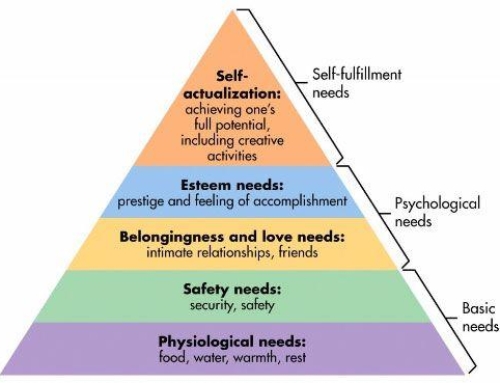Investing in the financial markets is one of the best long-term approaches to wealth. But at a slow and steady pace, many investors probably wonder how long it takes to make a million dollars using the stock market or treasury bonds.
Between 1928 and 1966, the S&P 500—an index of 500 of the largest market-capitalization stocks—has rewarded investors with 9.5% average annualized returns. From 1967 to 2006, investors enjoyed a 10.1% average annualized return. But just in case this makes you giddy with enthusiasm, S&P 500 average returns were only 6.8% between 2007-2018.
The Stock Market is a Credit Card You Issue
Much like a credit card given to you by a bank with the expectation of interest payments, you give money to someone expecting a return on your investment. Both use the same guiding principle: compounding interest.
The value of your initial investment grows exponentially over time. In simple terms, compounding is the cycle of generating additional returns on the money that you previously invested.
To get a clearer idea, look at how these S&P 500 return percentages work out in real dollars. Imagine that you invested $100 in the S&P 500 in 1928. Here’s what it would be worth over time:
| Result of a $100 Investment | |
|---|---|
| 1928 | $148.81 |
| 1938 | $121.53 |
| 1948 | $229.79 |
| 1958 | $1435.84 |
| 1968 | $3694.23 |
| 1978 | $5081.77 |
| 1988 | $22,672.40 |
| 1998 | $129,592.25 |
| 2008 | $113, 030.22 |
| 2012 | $193,388.43 |
| 2018 | $469,102.01 |
Notice that at the end of 1928, your $100 would have surged in value to $148.81. Yet, 10 years later, in 1938, the value dropped to $121.53. In the end, your initial $100 would have grown to over $469,000.
Despite the lofty annualized investment returns, during individual years returns vary. Since the turn of the century, the lowest annual return year was 2008 with a -36.55% annualized decline, while 2013 saw a 32.15% increase in value. During the prior 18 years, there were five negative return years and 13 positive return years in the S&P 500:
| S&P 500 and Treasury Bill Rates 2000-2018 | |||
|---|---|---|---|
| Year | S&P 500 | 3-month T.Bill | 10-year T. Bond |
| 2000 | -9.03 % | 5.76% | 16.66% |
| 2001 | -11.85% | 3.67% | 5.57% |
| 2002 | -21.97% | 1.66% | 15.12% |
| 2003 | 28.36% | 1.03% | 0.38% |
| 2004 | 10.74% | 1.23% | 4.49% |
| 2005 | 4.83% | 3.01% | 2.87% |
| 2006 | 15.61% | 4.68% | 1.96% |
| 2007 | 5.48% | 4.64% | 10.21% |
| 2008 | -36.55% | 1.59% | 20.10% |
| 2009 | 25.94% | 0.14% | -11.12% |
| 2010 | 14.82% | 0.13% | 8.46% |
| 2011 | 2.10% | 0.03% | 16.04% |
| 2012 | 15.89% | 0.05% | 2.97% |
| 2013 | 32.15% | 0.07% | -9.10% |
| 2014 | 13.52% | 0.05% | 10.75% |
| 2015 | 1.38% | 0.21% | 1.28% |
| 2016 | 11.77% | 0.51% | 0.69% |
| 2017 | 21.61% | 1.39% | 2.8% |
| 2018 | -4.23% | 2.37% | -0.02% |
If these historic norms hold true, investing in the stock market over the long-term will yield tremendous financial rewards.
How Long Until You’re a Millionaire
Based on the returns from previous years, see how long it’ll take you to reach a million dollars if you invest $5,000, $10,000 or $20,000 in an S&P 500 index fund. The tricky part of this calculation is choosing a future rate of return.
Going forward, you can use a projected 8.5% long-term annualized return. By averaging the 10.09% returns from 1967-2016 with the lower 2007-2018 return of 6.87%, a reasonable compromise is an 8.5% future return. Additionally, as the U.S. industrial base matures and GDP growth slows, it’s reasonable to expect future stock market returns to temper.
| Annual Investment Amount | Years to $1 Million |
| $5,000 | 35 |
| $10,000 | 27.59 |
| $20,000 | 20.32 |
| *Assumes 8.5% compounded annual rate of return |
If you begin investing in the stock market at age 30, you only need to contribute $5,000 annually to hit the million-dollar mark by age 65. Comparatively, if you wait until you’re age 45, to reach that same $1 million by age 65, you will have to pony up $20,000 per year. That’s a difference of $1,667 monthly for the 45-year-old versus $416 per month for the 30-year-old.
If becoming a millionaire is your goal, then investing in the stock market could be a good path. But as the numbers show, investing in the markets isn’t a get-rich-quick scheme. Financial planning experts will remind you that stocks are a long-term route to wealth building.
Finally, before diving into the financial markets, make certain to save up some emergency cash, so you’re not forced to withdraw money from the markets during a downturn.
SOURCE: thebalance.com





